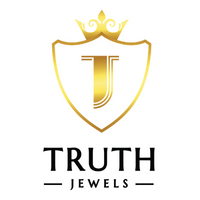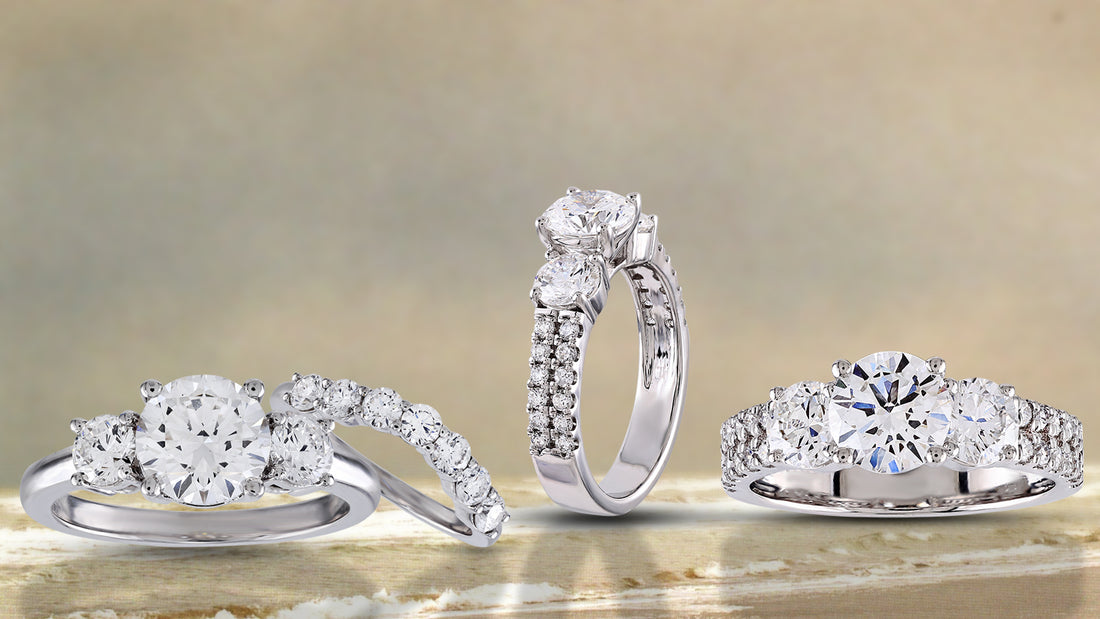A three-stone engagement ring is a timeless and elegant choice that symbolizes a couple’s past, and future together. Each stone in this type of ring has a unique significance: the center stone represents the present, while the two side stones symbolize the past and future. This guide will provide you with everything you need to know to select the perfect three-stone engagement ring.
Understanding the Basics of a Three Stone Ring
Three-stone engagement rings feature a trio of stones set closely together. The center stone is usually the largest and most prominent, with two smaller side stones flanking it. These side stones can be diamonds or other gemstones, depending on personal preference and style.
Step-by-Step Guide to Buying a Three Stone Engagement Ring
1. Determine Your Budget
Before you start shopping, it’s essential to establish a budget. Engagement rings can vary widely in price, and knowing your budget helps narrow down your options and prevent overspending. Consider factors such as the size and quality of the stones, the type of metal for the band, and any additional customizations or details.
2. Choose the Type of Stones
- Diamonds: The most traditional choice for engagement rings. They are durable, brilliant, and timeless.
- Gemstones: Sapphires, rubies, emeralds, and other gemstones can add a unique and colorful touch to the ring. They are also often more affordable than diamonds.
- Combination: Mixing diamonds with gemstones can create a stunning and unique look. For example, you can have a diamond center stone with sapphire side stones.
3. Understand the 4 Cs of Diamonds
If you choose diamonds for your ring, it’s crucial to understand the 4 Cs: Cut, Color, Clarity, and Carat Weight. These factors determine the quality and value of a diamond.
- Cut: The quality of the cut affects the diamond’s brilliance. Well-cut diamonds reflect light beautifully.
- Color: Diamond color ranges from D (colorless) to Z (light yellow or brown). Colorless diamonds are the most valuable.
- Clarity: Clarity refers to the presence of internal or external flaws. The fewer the flaws, the higher the clarity grade.
- Carat Weight: Carat weight measures the size of the diamond. Larger diamonds are generally more valuable, but the other Cs also significantly impact value.
4. Select the Shape of the Stones
The shape of the stones plays a crucial role in the overall appearance of the ring. The most common shapes include:
- Round: Classic and brilliant.
- Princess: Square-shaped with sharp corners.
- Emerald: Rectangular with step cuts.
- Oval: Elongated shape that can make the stone appear larger.
- Pear: Teardrop shape, a mix of round and marquise.
- Cushion: Square or rectangular with rounded corners.
Choose a shape that reflects your partner’s style and complements the overall design of the ring.
5. Decide on the Metal for the Band
The metal of the ring band is another important consideration. Popular options include:
- Platinum: Durable and hypoallergenic, with a bright white sheen.
- White Gold: Similar in appearance to platinum but more affordable.
- Yellow Gold: Traditional and classic, available in various karats.
- Rose Gold: Unique and romantic, with a pinkish hue.
- Palladium: A rarer metal, similar to platinum but lighter.
Each metal has its characteristics and price points, so choose one that fits your budget and style preferences.
6. Consider the Ring Setting
The setting of a three-stone ring can significantly affect its appearance and security. Some popular settings include:
- Prong: Small metal claws hold each stone securely in place while maximizing light exposure.
- Bezel: A metal rim encircles each stone, offering a modern look and excellent protection.
- Tension: The stones are held in place by the pressure of the metal band, creating a floating effect.
- Channel: The stones are set into a channel within the band, offering a sleek and secure design.
Choose a setting that complements the stones and suits your partner’s lifestyle and preferences.
7. Pay Attention to Proportions
The proportions of the three stones are critical to achieving a balanced and harmonious look. Typically, the center stone is larger and more prominent than the side stones. The side stones should be proportional to the center stone, enhancing its beauty without overshadowing it.
8. Customize the Design
Many jewelers offer customization options, allowing you to create a unique and personalized ring. Consider customizing aspects such as:
- Stone Sizes: Choose the exact carat weight for each stone to achieve the desired look.
- Stone Shapes: Mix and match different shapes for a distinctive design.
- Metal Finish: Select a polished, matte, or brushed finish for the band.
- Engravings: Add a personal message or significant date inside the band.
Customizing the ring ensures it is one-of-a-kind and holds special meaning for you and your partner.
9. Think About Future Maintenance
Engagement rings require regular maintenance to keep them looking their best. Consider the following when choosing a ring:
- Durability: Some metals and settings are more durable and require less maintenance.
- Cleaning: Regular cleaning is necessary to maintain the stone’s brilliance.
- Resizing: Choose a design that can be easily resized if needed.
Discuss maintenance requirements with your jeweler to ensure you can properly care for the ring over time.
10. Shop with a Reputable Jeweler
Choosing a reputable jeweler is crucial to ensuring you receive a high-quality ring. Look for jewelers with positive reviews, certifications from reputable organizations, and clear return or exchange policies. Don’t be afraid to ask questions and request documentation, such as diamond grading reports, to verify the quality of the stones.
11. Get a Second Opinion
If you’re unsure about your choice, consider bringing a trusted friend or family member for a second opinion. They can offer valuable insights and help you make a confident decision. Just make sure they understand your partner’s style and preferences.
12. Understand the Store’s Policies
Before making a purchase, familiarize yourself with the jeweler’s return, exchange, and warranty policies. This ensures you have options if the ring doesn’t meet your expectations or requires adjustments. Some stores also offer lifetime maintenance or upgrade options, which can be beneficial in the long run.
13. Consider Insurance
Engagement rings are valuable investments, both financially and sentimentally. Consider insuring the ring to protect against loss, theft, or damage. Many jewelers offer insurance options, or you can add the ring to your existing homeowner’s or renter’s insurance policy. Ensure you understand the coverage details and any exclusions.
14. Trust Your Instincts
Ultimately, the best ring is one that feels right to you and reflects your love and commitment. Trust your instincts and choose a ring that you believe your partner will cherish. Remember, the significance of the ring goes beyond its material value.
15. Take Your Time
Buying an engagement ring is a significant decision that shouldn’t be rushed. Give yourself plenty of time to research, compare options, and make an informed choice. Starting the process early also allows for any customizations or adjustments to be completed before the proposal.
Conclusion
Buying a three-stone engagement ring is a meaningful and exciting process that symbolizes your past, present, and future together. By considering factors such as budget, stone type, the 4 Cs, stone shape, metal, setting, proportions, customization, maintenance, and jeweler reputation, you can find the perfect ring for your partner. Remember to trust your instincts, take your time, and enjoy the journey of choosing a ring that will be cherished for a lifetime.

